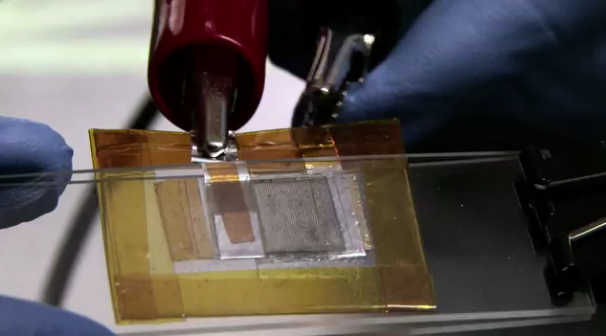A team of researchers from Stanford University in U.S introduced a lithium-ion battery that was bendable as well as transparent. The battery was created when polydimethylsiloxane was poured into silicon molds leading to formation of grid patterned trenches. The metal film evaporated, later on, from the trenches and created a conductive layer. These trenches were then filled with a liquid slurry constituted by nanosized active electrodes. This transparent substance then got sandwiched between its electrodes that acted as separator as well as electrolyte. The energy density of these batteries equated with that of NiCd batteries.

Figure 1: Transparent battery by Stanford University
Though the project was not completed, later on, another team in Japan pursued the same project. These were able to modify this concept and were finally able to come up with a with a new version of this battery that was not only transparent but also recharged itself with solar energy. The battery gets slightly tinted as and when exposed to direct sunlight bringing down the transparency level to 70 percent that further lowers the amount of light that can pass through the battery. This leads to more efficient captivation of energy, once the battery gets discharged completely the light transmittance increases to 60 percent. The reported output of this battery is somewhere around 3.6V.
The team is of the opinion that the technology can be modified in near future and will be used in creation of smart doors and windows for buildings, vehicles, and other things. The same technique can also be used in designing of smartphone screens and train roofs. Almost half a decade back, Nexeon raised amount worth £40 million for a manufacturing facility that could produce silicone anode materials worth 20 tonnes annually. The pilot phase of this project was finished in 2014 in Oxfordshire and its current production capacity is somewhere around 20 tonnes per year, almost 20 times of what they planned initially. Apart from the manufacturing ability, the plant also includes integrated laboratories that can process development and be used in characterization of materials.
Filed Under: News


Questions related to this article?
👉Ask and discuss on EDAboard.com and Electro-Tech-Online.com forums.
Tell Us What You Think!!
You must be logged in to post a comment.